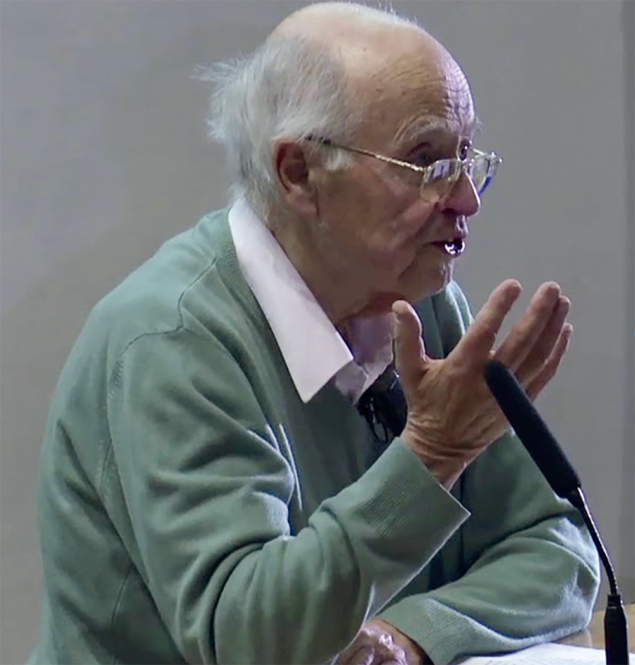
The eminent mathematician Michael Atiyah died in Edinburgh on 11 January, aged 89. He was one of the giants of mathematics whose work influenced an enormous range of subjects, including theoretical high-energy physics.
Atiyah’s most notable achievement, with Isadore Singer, is the “index theorem”, which occupied him for more than 20 years and generated results in topology, geometry and number theory using the analysis of elliptic differential operators. In mid-life, he learned that theoretical physicists also made use of the theorem and this opened the door to an interaction between the two disciplines, which he pursued energetically until the end of his life. It led him not only to mathematical results on Yang–Mills equations, but also to encouraging the importation of concepts from quantum field theory into pure mathematics.
Early years
Born of a Lebanese father and a Scottish mother, his early years were spent in English schools in the Middle East. He then followed the natural course for a budding mathematician in that environment by attending the University of Cambridge, where he ended up writing his thesis under William Hodge and becoming a fellow at Trinity College. As a student he had little interest in physics, but went to hear Dirac lecture largely because of his fame. The opportunity then arose to spend a year at the Institute for Advanced Study in Princeton in the US, where he met his future collaborators and close friends Raoul Bott, Fritz Hirzebruch and Singer.
A visit by Singer to the University of Oxford (where Atiyah had recently moved) in 1962 began the actual work on the index theorem, where the Dirac operator would play a fundamental role. This ultimately led to Atiyah being awarded a Fields Medal in 1966 and, with Singer, the Abel Prize in 2004. Over the years, proofs and refinements of the index theorem evolved. Although topology was at the forefront of the first approaches, in the early 1970s techniques using “heat kernels” became more analytic and closer to the calculations that theoretical physicists were performing, especially in the context of anomalies in quantum field theory. In the 1980s, in a proof by Luis Álvarez-Gaumé (who subsequently became a member of the CERN theoretical physics unit for 30 years), Hirzebruch’s polynomials in the Pontryagin classes – which form the topological expression for the index – emerged as a natural consequence of supersymmetry.
Singer visited Oxford again in 1977, this time bringing mathematical questions concerning Yang-Mills theory. Using quite sophisticated algebraic geometry and the novel work of Roger Penrose, this yielded a precise answer to physicists’ questions about instantons, specifically the so-called ADHM (Atiyah, Drinfeld, Hitchin, Manin) construction. That mathematicians and physicists had common ground in a completely new context made a huge impression on Michael, and he was energetic in facilitating this cooperation thereafter. He frequently engaged in correspondence and discussions with Edward Witten, out of which emerged the current fashion in mathematics of topological quantum field theories – beginning with a formalism that described new invariants of knots. Despite the quantum language of this domain, Michael’s mathematical work with a physical interface was more concerned with classical solutions, and the soliton-like behaviour of monopoles and skyrmions.
Founding father
During his life he took on many administrative tasks, including the presidency of the Royal Society and mastership of Trinity College. He was also the founding director of the Isaac Newton Institute for Mathematical Sciences in Cambridge.
With his naturally effervescent personality he possessed, in Singer’s words, “speed, depth, power and energy”. Collaborations were all-important, bouncing ideas around with both mathematicians and physicists. Beauty in mathematics was also a feature he took seriously, as was a respect for the mathematicians and physicists of the past. He even campaigned successfully for a statue of James Maxwell to be erected in Edinburgh, his home city, in later years.
As for the index theorem itself, it is notable that one of the more subtle versions – the “mod 2 index” – played an important role in Kane and Mele’s theoretical prediction of topological insulators. As they wrote in their 2005 paper: “it distinguishes the quantum spin-Hall phase from the simple insulator.” A fitting tribute to an outstanding pure mathematician, whose intuition and technical power revealed so much in so many domains.







